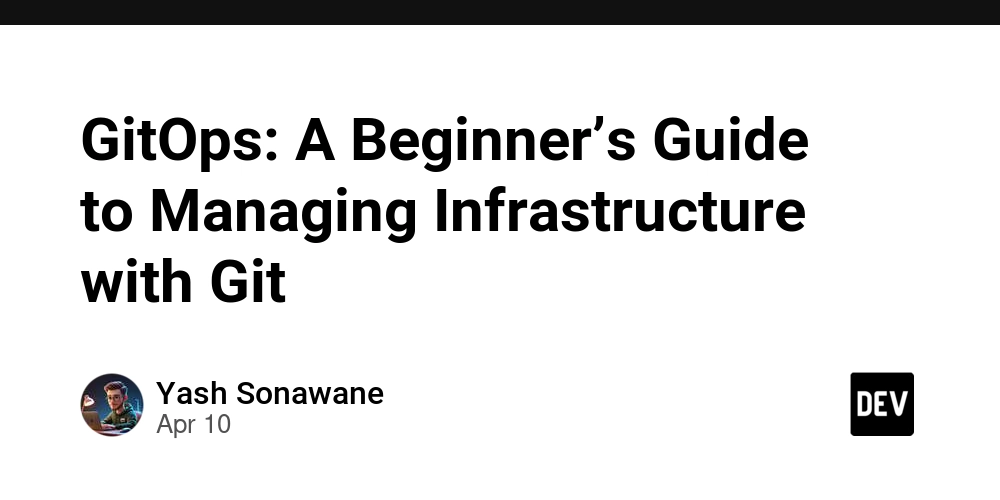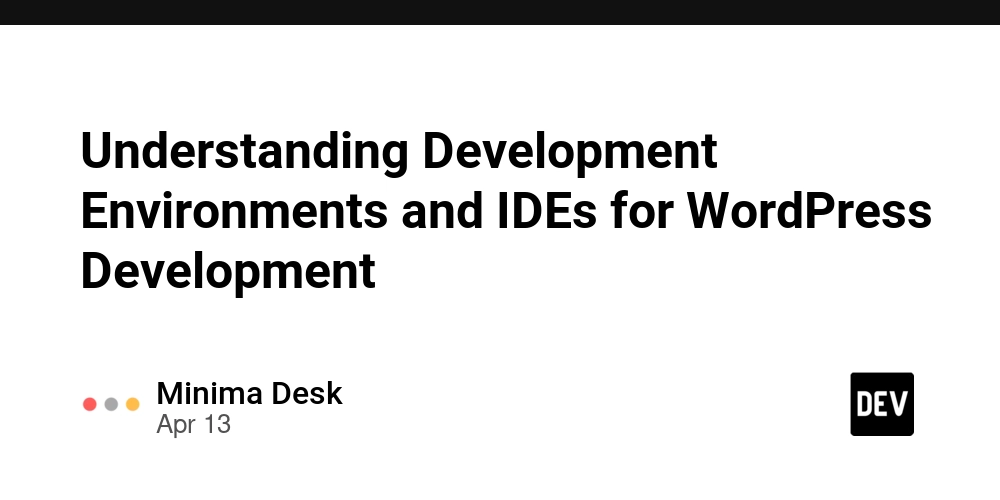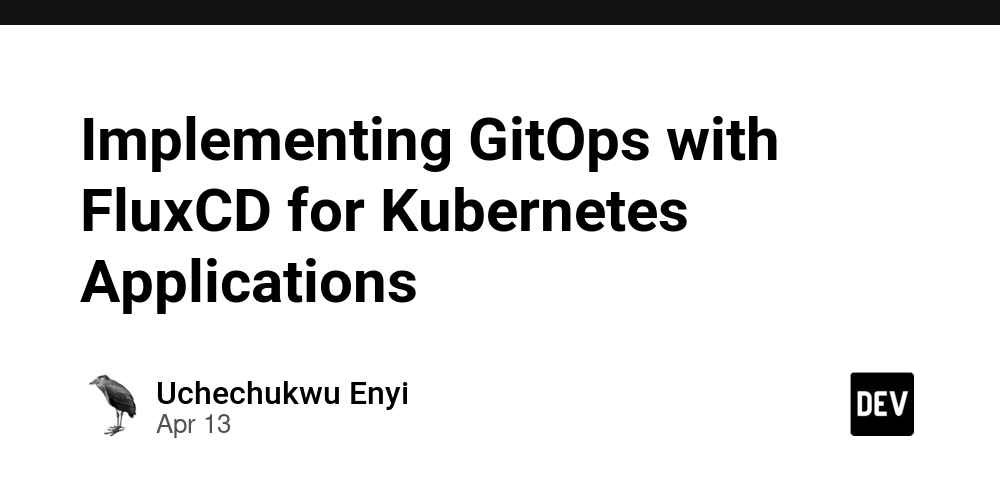GitOps: A Beginner’s Guide to Managing Infrastructure with Git
Introduction In the fast-paced world of DevOps, automation and version control are critical for maintaining consistency, reliability, and speed in software delivery. GitOps is a modern approach that extends DevOps practices by leveraging Git as the single source of truth for infrastructure and application deployments. It simplifies operations, improves collaboration, and enhances security, making it a trending topic in the DevOps ecosystem. What is GitOps? GitOps is an operational framework that uses Git repositories as the source of truth for declarative infrastructure and applications. It builds on Infrastructure as Code (IaC) principles, enabling teams to manage cloud-native environments more efficiently. By using Git as the control mechanism, GitOps ensures that deployments are automated, auditable, and reproducible. How GitOps Works GitOps follows a simple yet effective workflow: Declarative Configuration: Infrastructure and application configurations are stored in a Git repository using declarative YAML manifests. Version Control & Change Management: Every change is tracked via Git commits, allowing teams to roll back or audit modifications easily. Automated Synchronization: A GitOps operator (e.g., ArgoCD or Flux) continuously monitors the repository and ensures the actual state of the system matches the desired state. Continuous Deployment: Changes merged into the repository automatically trigger deployment processes, reducing manual intervention. GitOps Architecture A typical GitOps setup includes: Git Repository (Source of Truth) GitOps Operator (ArgoCD, Flux, Jenkins X) CI/CD Pipeline (For testing & verification) Cluster or Infrastructure (Kubernetes, AWS, etc.) Real-World Example A team using Kubernetes can define all application manifests (e.g., Deployments, Services, ConfigMaps) in a Git repository. ArgoCD monitors the repository, detects changes, and applies them automatically to the cluster, ensuring infrastructure consistency. Key Features & Benefits Features: Declarative Infrastructure & Applications Automated Reconciliation & Self-Healing Version Control & Auditability Security & Access Control via Git Scalability & Cloud-Native Support Benefits: Enhanced Collaboration: Teams work in a shared Git repository. Improved Security: Git-based access control reduces risks. Faster Deployments: Automated workflows speed up releases. Disaster Recovery: Easy rollback to a stable version. Use Cases & Industry Adoption Companies Using GitOps: Intuit uses GitOps for managing multi-cloud Kubernetes clusters. Weaveworks pioneered GitOps and maintains Flux, a popular GitOps tool. Spotify leverages GitOps for scalable microservices deployments. Common Use Cases: Kubernetes Cluster Management Multi-Cloud Deployments Continuous Delivery Pipelines Infrastructure as Code Management Comparison with Alternatives Feature GitOps Traditional CI/CD Manual Infrastructure Management Version Control Yes Partial No Automated Reconciliation Yes No No Rollback Capability Yes Partial No Security & Compliance High Medium Low Complexity Moderate High High Step-by-Step Implementation Prerequisites: A Kubernetes Cluster (Minikube, EKS, GKE, AKS) Git Repository (GitHub, GitLab, Bitbucket) GitOps Tool (ArgoCD, Flux) Setup GitOps with ArgoCD Install ArgoCD: kubectl create namespace argocd kubectl apply -n argocd -f https://raw.githubusercontent.com/argoproj/argo-cd/stable/manifests/install.yaml Access ArgoCD UI: kubectl port-forward svc/argocd-server -n argocd 8080:443 Connect Git Repository: argocd repo add https://github.com/your-repo.git Deploy Application: argocd app create my-app --repo https://github.com/your-repo.git --path my-app --dest-server https://kubernetes.default.svc --dest-namespace default Latest Updates & Trends ArgoCD 2.0 introduced better RBAC and multi-cluster support. Flux v2 now integrates seamlessly with Helm and Kustomize. GitOps Working Group by CNCF is defining best practices. Challenges & Considerations Learning Curve: Requires understanding of Git and Kubernetes. Security Concerns: Git secrets should be managed carefully (e.g., using Sealed Secrets or HashiCorp Vault). Infrastructure Drift: External changes must be reconciled to prevent inconsistencies. Conclusion & Future Scope GitOps is transforming DevOps workflows by providing a declarative, automated, and Git-centric approach to managing infrastructure. As the adoption of Kubernetes and cloud-native architectures grows, GitOps will become a standard practice, offering better scalability, security, and automation. References & Further Learning GitOps - CNCF ArgoCD Documentation FluxCD Documentation Weavework

Introduction
In the fast-paced world of DevOps, automation and version control are critical for maintaining consistency, reliability, and speed in software delivery. GitOps is a modern approach that extends DevOps practices by leveraging Git as the single source of truth for infrastructure and application deployments. It simplifies operations, improves collaboration, and enhances security, making it a trending topic in the DevOps ecosystem.
What is GitOps?
GitOps is an operational framework that uses Git repositories as the source of truth for declarative infrastructure and applications. It builds on Infrastructure as Code (IaC) principles, enabling teams to manage cloud-native environments more efficiently. By using Git as the control mechanism, GitOps ensures that deployments are automated, auditable, and reproducible.
How GitOps Works
GitOps follows a simple yet effective workflow:
- Declarative Configuration: Infrastructure and application configurations are stored in a Git repository using declarative YAML manifests.
- Version Control & Change Management: Every change is tracked via Git commits, allowing teams to roll back or audit modifications easily.
- Automated Synchronization: A GitOps operator (e.g., ArgoCD or Flux) continuously monitors the repository and ensures the actual state of the system matches the desired state.
- Continuous Deployment: Changes merged into the repository automatically trigger deployment processes, reducing manual intervention.
GitOps Architecture
A typical GitOps setup includes:
- Git Repository (Source of Truth)
- GitOps Operator (ArgoCD, Flux, Jenkins X)
- CI/CD Pipeline (For testing & verification)
- Cluster or Infrastructure (Kubernetes, AWS, etc.)
Real-World Example
A team using Kubernetes can define all application manifests (e.g., Deployments, Services, ConfigMaps) in a Git repository. ArgoCD monitors the repository, detects changes, and applies them automatically to the cluster, ensuring infrastructure consistency.
Key Features & Benefits
Features:
- Declarative Infrastructure & Applications
- Automated Reconciliation & Self-Healing
- Version Control & Auditability
- Security & Access Control via Git
- Scalability & Cloud-Native Support
Benefits:
- Enhanced Collaboration: Teams work in a shared Git repository.
- Improved Security: Git-based access control reduces risks.
- Faster Deployments: Automated workflows speed up releases.
- Disaster Recovery: Easy rollback to a stable version.
Use Cases & Industry Adoption
Companies Using GitOps:
- Intuit uses GitOps for managing multi-cloud Kubernetes clusters.
- Weaveworks pioneered GitOps and maintains Flux, a popular GitOps tool.
- Spotify leverages GitOps for scalable microservices deployments.
Common Use Cases:
- Kubernetes Cluster Management
- Multi-Cloud Deployments
- Continuous Delivery Pipelines
- Infrastructure as Code Management
Comparison with Alternatives
| Feature | GitOps | Traditional CI/CD | Manual Infrastructure Management |
|---|---|---|---|
| Version Control | Yes | Partial | No |
| Automated Reconciliation | Yes | No | No |
| Rollback Capability | Yes | Partial | No |
| Security & Compliance | High | Medium | Low |
| Complexity | Moderate | High | High |
Step-by-Step Implementation
Prerequisites:
- A Kubernetes Cluster (Minikube, EKS, GKE, AKS)
- Git Repository (GitHub, GitLab, Bitbucket)
- GitOps Tool (ArgoCD, Flux)
Setup GitOps with ArgoCD
- Install ArgoCD:
kubectl create namespace argocd
kubectl apply -n argocd -f https://raw.githubusercontent.com/argoproj/argo-cd/stable/manifests/install.yaml
- Access ArgoCD UI:
kubectl port-forward svc/argocd-server -n argocd 8080:443
- Connect Git Repository:
argocd repo add https://github.com/your-repo.git
- Deploy Application:
argocd app create my-app --repo https://github.com/your-repo.git --path my-app --dest-server https://kubernetes.default.svc --dest-namespace default
Latest Updates & Trends
- ArgoCD 2.0 introduced better RBAC and multi-cluster support.
- Flux v2 now integrates seamlessly with Helm and Kustomize.
- GitOps Working Group by CNCF is defining best practices.
Challenges & Considerations
- Learning Curve: Requires understanding of Git and Kubernetes.
- Security Concerns: Git secrets should be managed carefully (e.g., using Sealed Secrets or HashiCorp Vault).
- Infrastructure Drift: External changes must be reconciled to prevent inconsistencies.
Conclusion & Future Scope
GitOps is transforming DevOps workflows by providing a declarative, automated, and Git-centric approach to managing infrastructure. As the adoption of Kubernetes and cloud-native architectures grows, GitOps will become a standard practice, offering better scalability, security, and automation.












































































































































































![[The AI Show Episode 143]: ChatGPT Revenue Surge, New AGI Timelines, Amazon’s AI Agent, Claude for Education, Model Context Protocol & LLMs Pass the Turing Test](https://www.marketingaiinstitute.com/hubfs/ep%20143%20cover.png)


























































































































![[DEALS] Microsoft Visual Studio Professional 2022 + The Premium Learn to Code Certification Bundle (97% off) & Other Deals Up To 98% Off](https://www.javacodegeeks.com/wp-content/uploads/2012/12/jcg-logo.jpg)



![From Accountant to Data Engineer with Alyson La [Podcast #168]](https://cdn.hashnode.com/res/hashnode/image/upload/v1744420903260/fae4b593-d653-41eb-b70b-031591aa2f35.png?#)







































































































.png?#)

































































































































![What Google Messages features are rolling out [April 2025]](https://i0.wp.com/9to5google.com/wp-content/uploads/sites/4/2023/12/google-messages-name-cover.png?resize=1200%2C628&quality=82&strip=all&ssl=1)











![iPadOS 19 Will Be More Like macOS [Gurman]](https://www.iclarified.com/images/news/97001/97001/97001-640.jpg)
![Apple TV+ Summer Preview 2025 [Video]](https://www.iclarified.com/images/news/96999/96999/96999-640.jpg)
![Apple Watch SE 2 On Sale for Just $169.97 [Deal]](https://www.iclarified.com/images/news/96996/96996/96996-640.jpg)





































































































































